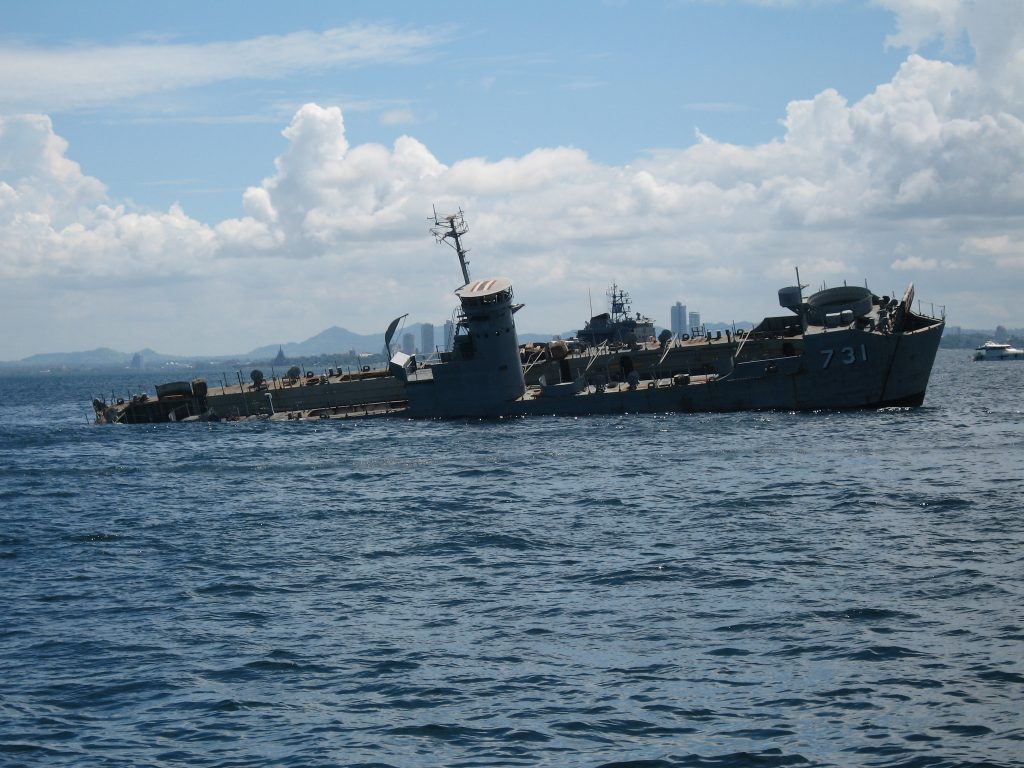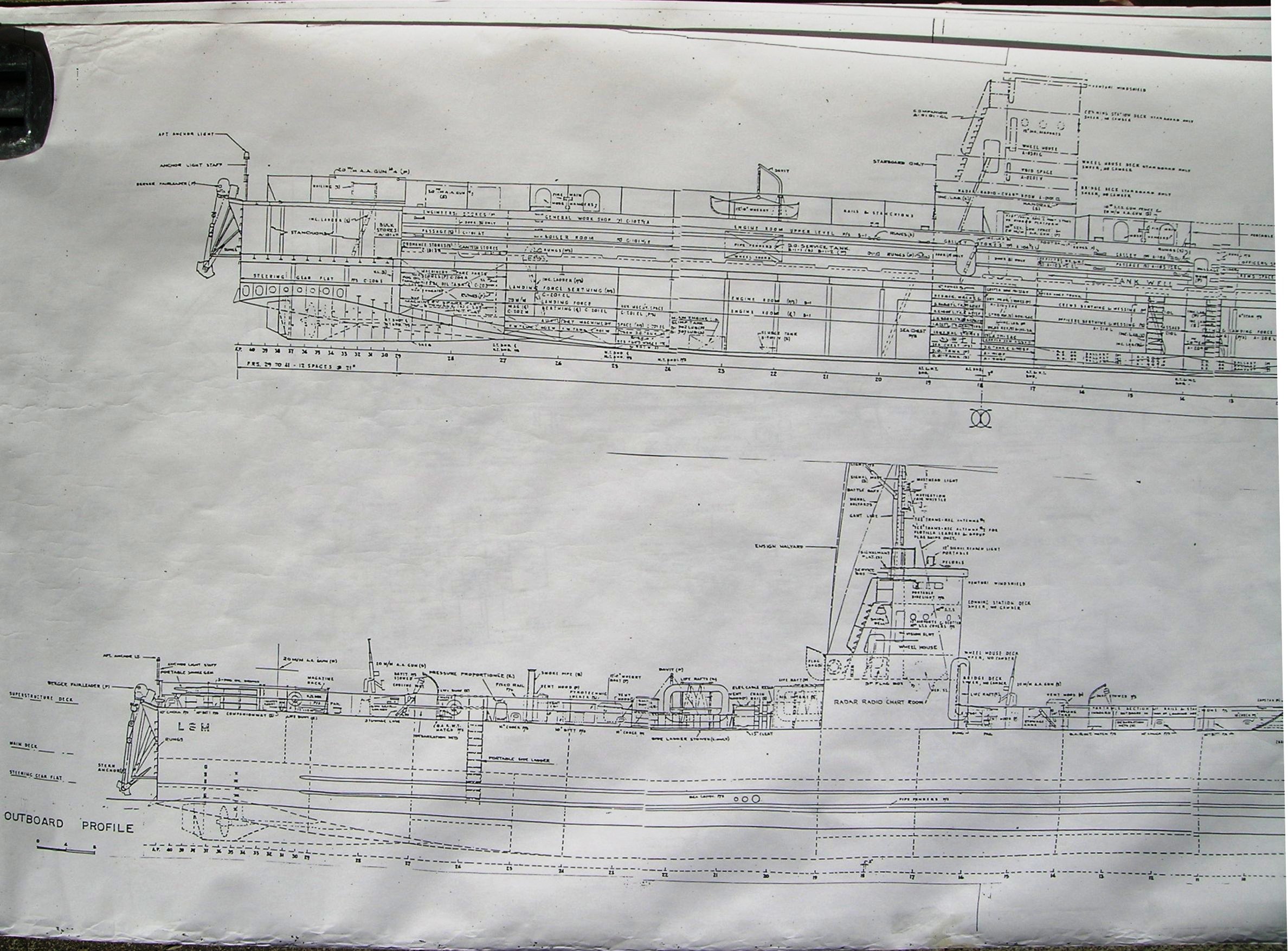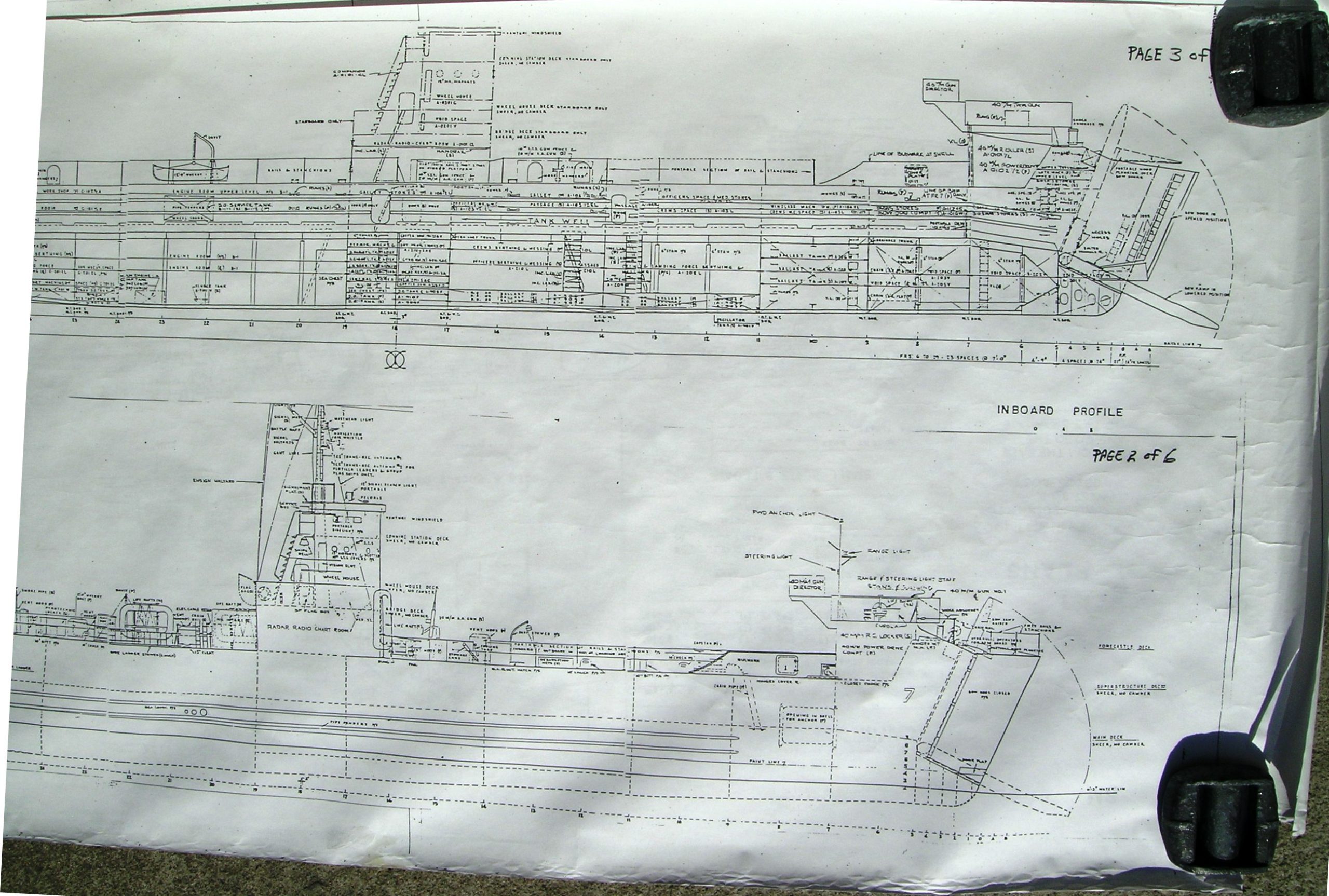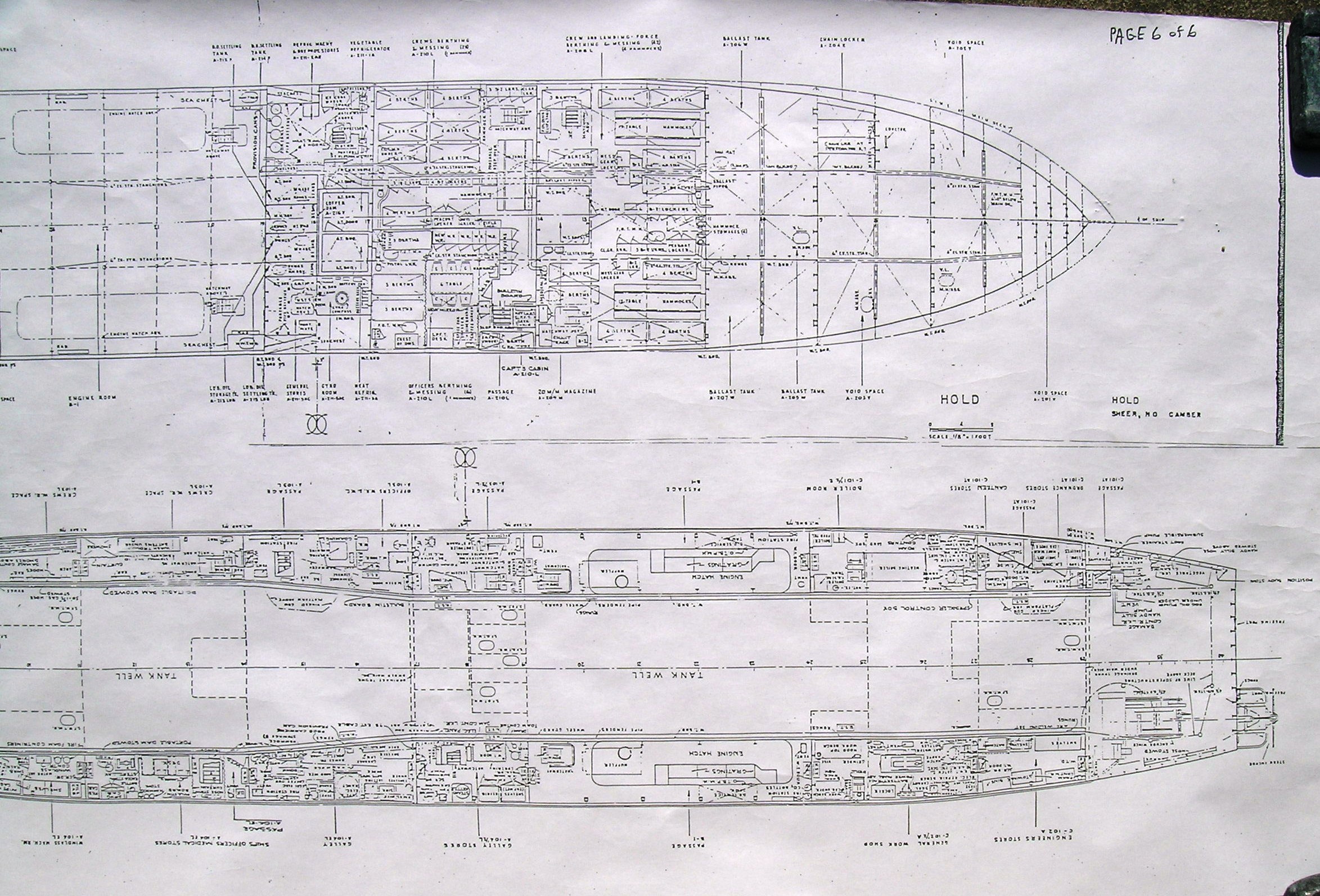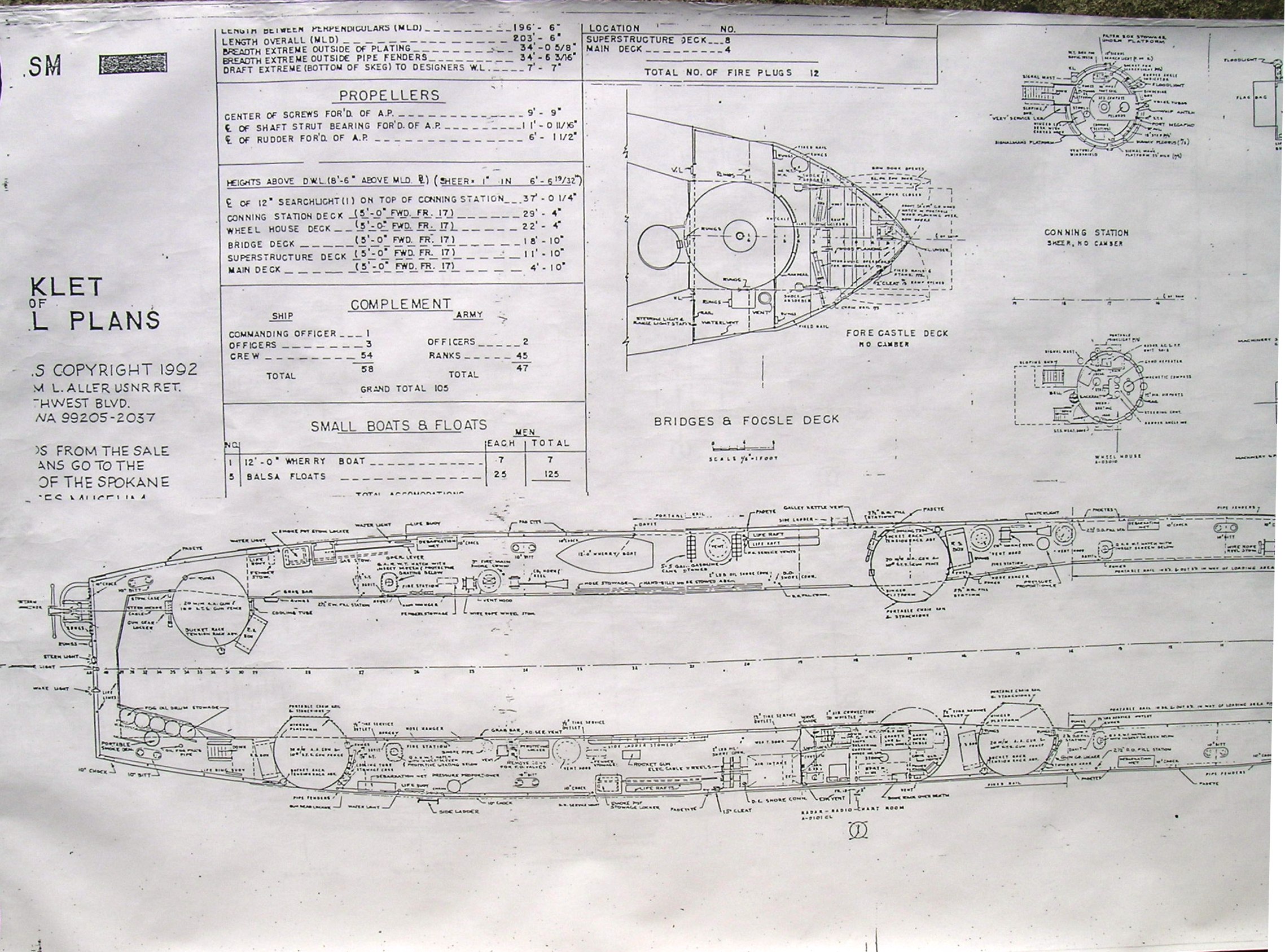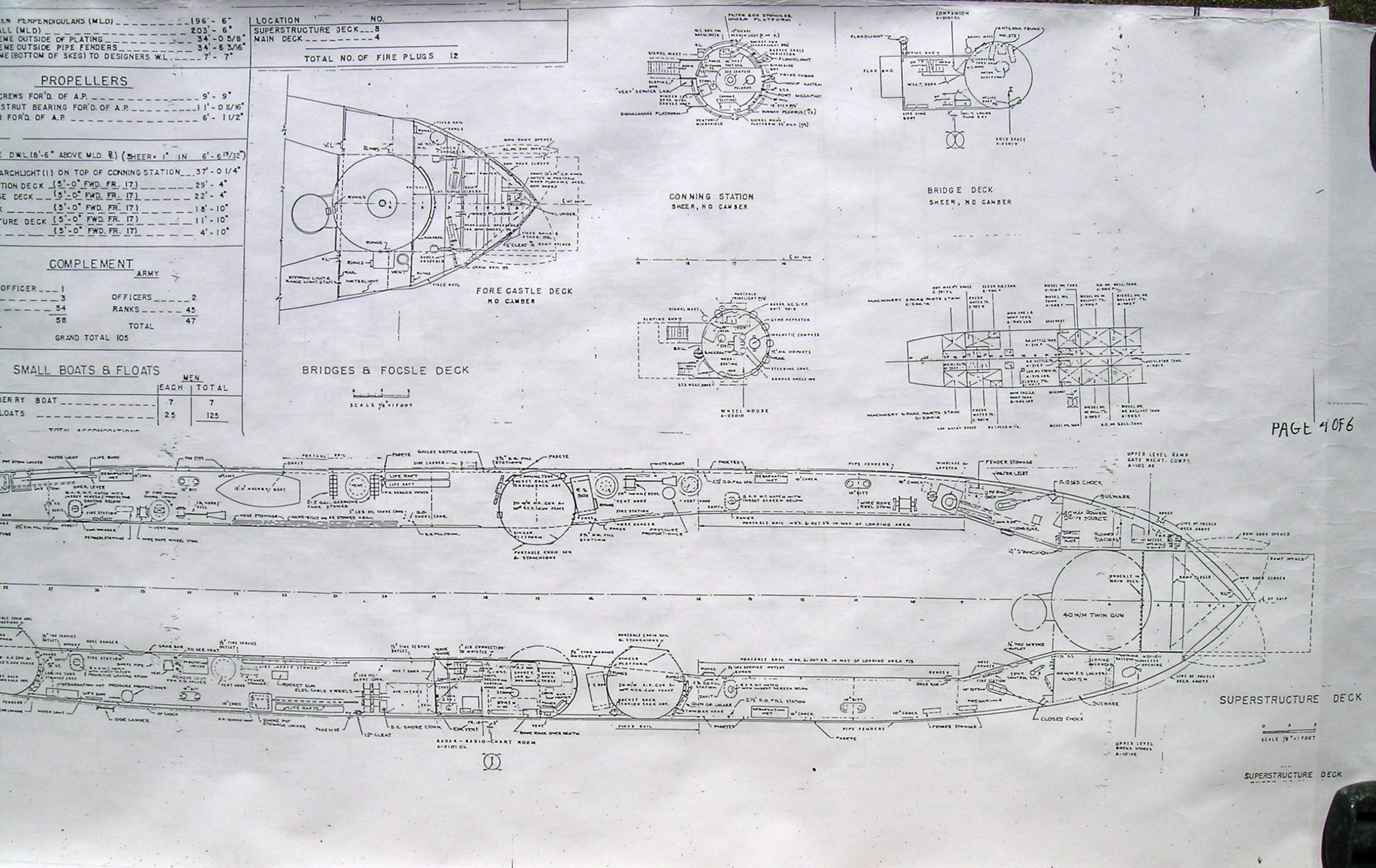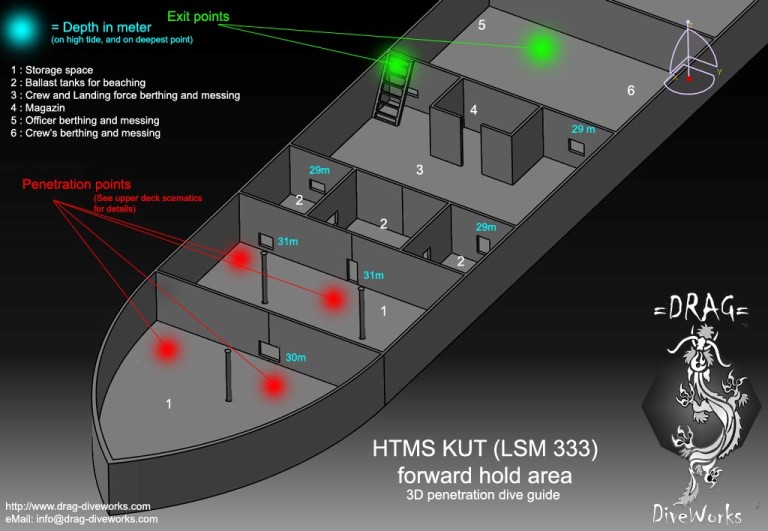The HTMS Kut is a World War 2-era amphibious assault ship sunk in 2006 as an artificial reef. She sits in 31m of water about 45 minutes from Bali Hai Pier in Pattaya with local dive shops dropping on her daily.
She has something for everyone. It is home to a variety of marine life and has a range of swim-throughs and challenging penetrations.
Conditions on the Kut can be challenging with poor visibility and strong current.
Diving the HTMS Kut Wreck in Pattaya
Conditions on the HTMS Kut can be challenging, but are still quite suitable for beginner divers. The wreck is 62m in length, allowing you to easily circumnavigate it in a single dive.
The deck sits at around 22m with the holds a few meters deeper. Nitrox is usually a good idea, as dives will be limited by NDLs for recreational divers.
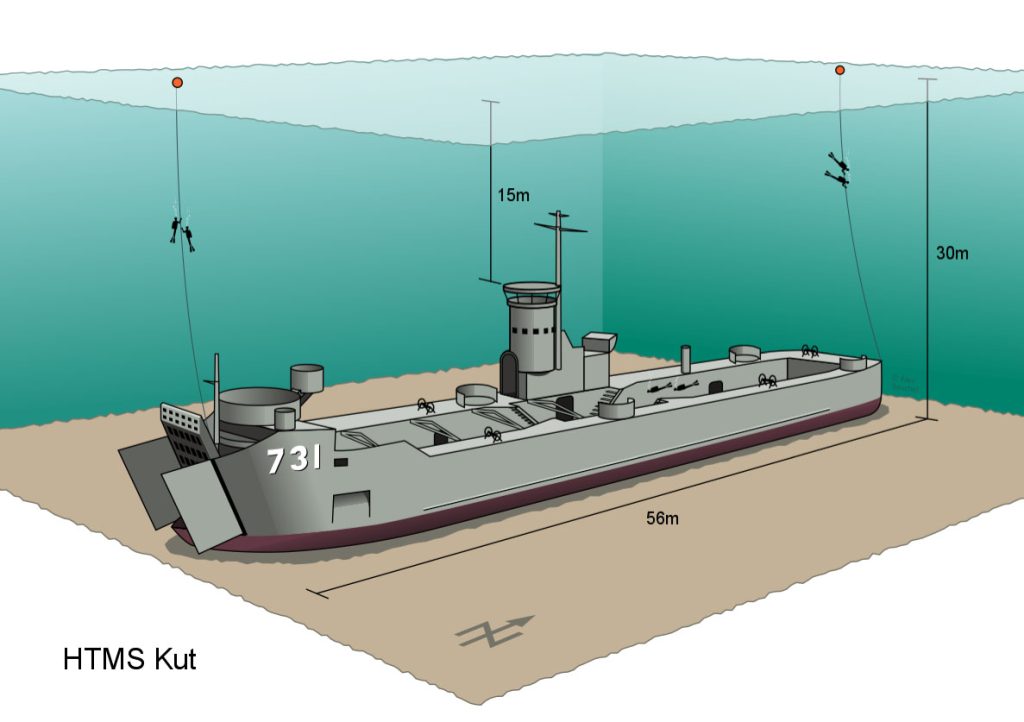
Buoy Line for Descent & Line
You can usually find at least one buoy line on the HTMS Kut running down to the port railing near the bow. A secondary line is sometimes run up from the conning tower.
Strong surface currents can make entry a bit of a challenge.
Nets & Hazards
The Kut is relatively free of nets and other hazards.
Areas of Interest
The Kut has a lot going on, definitely enough to keep you busy for many, many dives.
Bow
The HTMS Kut is an amphibious ship designed to land troops and equipment onto beaches. The ramp lays closed, just under the remains of gun turrets.
Deck
Corridors on the port and starboard run from bow to stern. Several portholes on the bow end of the deck lead to the more challenging penetrations on the Kut. Even if you don’t plan on going inside, the portholes and hatches are all worthy of a quick peek.
Cutouts
There are two cutouts in the deck. The bow-side cutout leads down into the mess hall and berths. Further towards the stern you will find the engine room cutout. The engine room is also accessible via vertical cutouts in the corridors.
Conning Tower & Wheelhouse
The conning tower sits midship on the starboard side. There are two hatches at the base of the tower, one facing the deck and another inside the vertical cutout. Sometimes there is another line attached to the top of the tower.
Props & Rudders
The props were removed prior to sinking, but the rudders are still there.
What marine life is on the HTMS Kut Wreck?
You can expect to find a nice variety of marine life on the HTMS Kut. The deck is home to several species of nudibranchs. The first groups down are often lucky enough to see some of the various local species barracuda. Resident turtles will often sit on the deck or up in the conning tower. Great barracudas rest down in the sand under the bow door.
Technical Diving on the HTMS Kut Wreck
The HTMS Kut is a great wreck for technical diving. Most wrecks are good for training or better for practicing your skills after a course. The Kut has it all and can support pretty much every kind of technical diving that can be done in 30m of water.
Staging Tanks
You don’t need to worry about other operators or guides disturbing staged tanks, so you can stage your tanks near the line without worry. The wreck is small enough, and with the conning tower it is usually quite easy to navigate back to the line.
Running Deco
The Kut is often subjected to strong currents. During the bottom portion of the dive you can always find shelter close to the wreck, but it does pose a problem when running drifting deco.
Strong midwater and surface currents can push you kilometers off the wreck. There can also be a quite a bit of boating traffic from nearby Koh Sam.
Thankfully, the Kut almost always has a buoy line suitable for hanging.
Penetration
The Kut has a wide variety of swim-throughs and penetration available suitable for every level. She has two corridors that run the length of the ship, each with various connections down into the ship. Several portholes on the bow end of the deck lead to some interesting rooms and passageways.
Logistics
Most local operators can source any bottom or deco gasses you may want to dive the HTMS Kut. That said, most of them will simply order them from Pattaya Dive Center, who can be contacted directly.
History of the HTMS Kut Wreck
The HTMS Kut is an American made Landing Ship, Medium (LSM). She was designed to land tanks and vehicles on beaches. LSMs operated in convoys with LCI(L) infantry landing crafts during World War 2.
LSMs are capable of holding a maximum of 165 tons. This can support up to:
- 5 medium tanks
- 3 heavy tanks
- 6 LVTs
- 9 DUKWs
The LSM was a derivative of the much larger LST and LCT(6) landing ships and entered service in 1944. In total, 558 LSMs were built by the United States, and took as little as 53 days to go from laying the keel to commissioning.
LSM-333 in World War 2
The HTMS Kut was laid down on June 27, 1944 by the Pullman Company in Chicago, Illinois. She was commissioned a few months later on November 11, 1944 as the LSM-333.
The LSM-333 was sent to fight in the Pacific theater, and played her own small role in the Battle of Okinawa from April 28 to May 18 1945.
Transfer to Thailand
She was decommissioned shortly after the war on July 28 1946. In October of 1946 she was transferred to Thailand, who commissioned her into the Royal Thai Navy on November 20 1947 and renamed her the HTMS Kut.
The HTMS Kut served the Royal Thai Navy as a troop transport and logistics vessel, and played a role in the Korean War.
She was again decommissioned in 1990 and sent to the Phachunlachomklao Dock Yard, used for spare parts.
How did the HTMS Kut Wreck sink?
After the success of the HTMS Khram, the Royal Thai Navy, the Pattaya City Council, and Department of Marine and Coastal Resources (DMCR) worked to clean the wreck and prepare her to be an artificial reef.
On September 17, 2006 she was towed to Pattaya Bay and scuttled.
